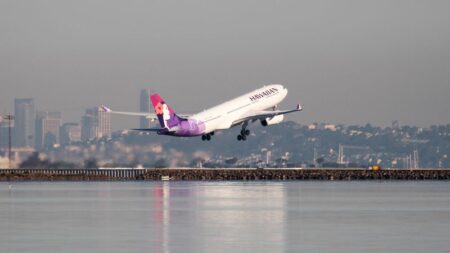In a significant development regarding international trade and business, Nike has announced that the tariffs imposed by President Donald Trump on key trading partners could result in increased costs for the company amounting to approximately $1 billion (£730 million) within the current financial year. The company’s executive team has indicated that these tariffs are creating challenges for their operations, prompting them to rethink their manufacturing strategies, particularly in relation to China, which has been a primary source for their products.
As part of its strategic adjustments in response to these tariffs, Nike plans to reduce its reliance on Chinese manufacturing. This shift is intended to mitigate the financial impact of the U.S. trade policies that have come into effect. In a recent announcement, the athletic apparel giant disclosed that it would be raising prices on select footwear and clothing in the U.S., a decision echoing similar concerns raised by competitor Adidas, who had warned of forthcoming price hikes due to the tariffs.
Intriguingly, despite this challenging backdrop, Nike’s shares saw an increase of over 10% during extended trading after the company reported a less severe decrease in its first quarter revenue than analysts had predicted. This positive stock market response, however, must be contextualized within Nike’s overall financial performance. The company reported earnings for the last quarter that, while exceeding projections, still represented the lowest figures it has experienced in over three years. The fourth-quarter revenue amounted to $11.1 billion, a stark decline since the prior year.
Nike’s Chief Financial Officer, Matthew Friend, elaborated on the company’s plans, stating that production in China—currently accounting for 16% of all Nike footwear entering the U.S.—would be decreased to a high single-digit percentage by the end of May 2026. This strategic redirection aims to lessen the burden of tariffs that affect Chinese imports the most. It comes as a response to the sweeping tariffs Trump announced on April 2, which significantly impacted trade with numerous countries.
After the initial tariffs were set, President Trump indicated a willingness to renegotiate terms, subsequently suspending many of the tariffs to facilitate discussions with affected countries, thus reducing the tariff rates to around 10%. Nevertheless, the deadline for these negotiations is looming, with the 90-day pause due to expire on July 9, heightening scrutiny on the White House’s next steps regarding these tariffs.
Trump recently remarked that negotiations were progressing well, citing agreements with China and potential discussions with India. However, he also cautioned that the U.S. would not extend favorable terms to every nation, highlighting that some could expect high tariffs irrespective of negotiations. This stance reflects a broader strategy rooted in America’s insistence on more favorable trade terms in the global market.
Commerce Secretary Howard Lutnick mentioned that the agreement with China formalized previous commitments made during trade discussions, particularly regarding U.S. access to vital minerals considered essential for various industries, including renewable energy technologies. The administration’s recent efforts towards stabilizing trade relations have come after intense tariff wars that nearly crippled trade between the U.S. and China.
In summary, Nike’s adjustments to its operations in light of the tariffs imposed by the current administration reflect a broader trend as companies navigate the complexities introduced by fluctuating trade policies. The outcome of these negotiations will undoubtedly have significant implications for various stakeholders in the global marketplace, as trade relations continue to evolve in response to political actions. Nike’s proactive measures to modify their supply chain and pricing strategies highlight the intricate relationship between government policies and corporate strategies in today’s interconnected economic landscape.











